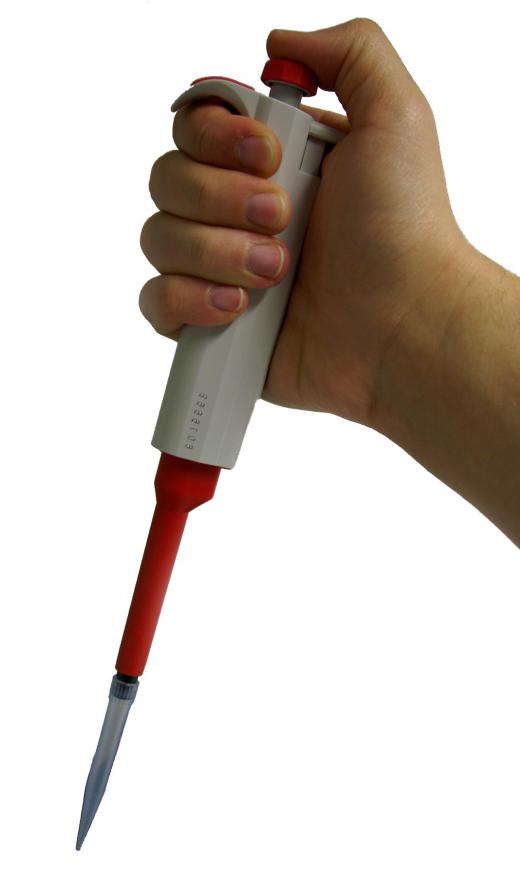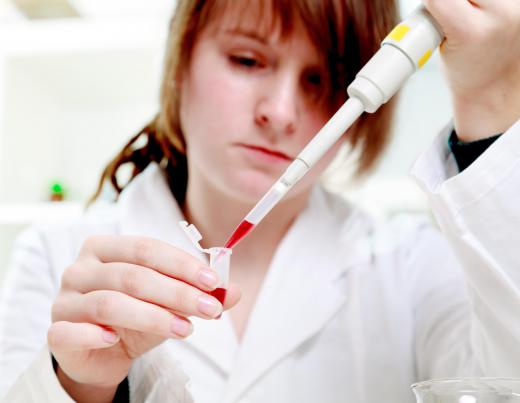What Is a Graduated Pipette?
In a laboratory, pipettes are used to transfer liquid between different locations. There are many different types of pipettes that vary in their accuracy when it comes to measuring the volume of the liquid that is being transferred. A graduated pipette is one type of pipette that allows the user to determine the volume of liquid that is being removed.
This instrument is also referred to as a Mohr pipette, after Karl Friedrich Mohr, a 19th century pharmacist. Mohr is said to have developed the graduated pipette so that he could specify the volume of liquid that he wanted to transfer. The word "graduated" refers to the series of lines located at specific intervals that run the length of the tube. These lines allow the user to specify and measure the volume of liquid that is being transferred. Graduated pipettes are more accurate than Pasteur pipettes, but not as accurate as volumetric pipettes.

Pipettes are long cylinders that are usually made from plastic or glass. They are tapered at one end, which is where the liquid is drawn into and expelled from the pipette. All pipettes, including graduated ones, come in a variety of sizes, so that different volumes can be transferred.
To draw liquid into a graduated pipette, some kind of suction aid must be attached to the end that is not tapered. There are three types of suction aids that can be attached to the pipette, which are a rubber bulb, a pipette pump and an electronic dispenser. The most basic apparatus is the rubber bulb, with pipette pumps and electronic dispensers allowing the user to have more control so that more accurate volumes can be measured and dispensed.

To determine the volume of the liquid that is dispensed, the user must calculate the difference in the level of the liquid found in the graduated pipette before and after it has been dispensed into the new container. To ensure accurate volume measurements, it is important that the meniscus rest on the top of the graduation line. A meniscus is the bottom of the bow that is formed by the liquid within the pipette.

The graduations are numbered from zero at the top to the largest number at the bottom. For example, if a person wanted 10 milliliters of a liquid and was using a 10 milliliter (ml) graduated pipette, he or she would fill the pipette to the zero line at the top of the pipette. To dispense 10 ml, the user would release the suction aid so that the liquid empties out of the pipette until the meniscus is sitting on the graduation labeled 10.
AS FEATURED ON:
AS FEATURED ON:













Discuss this Article
Post your comments